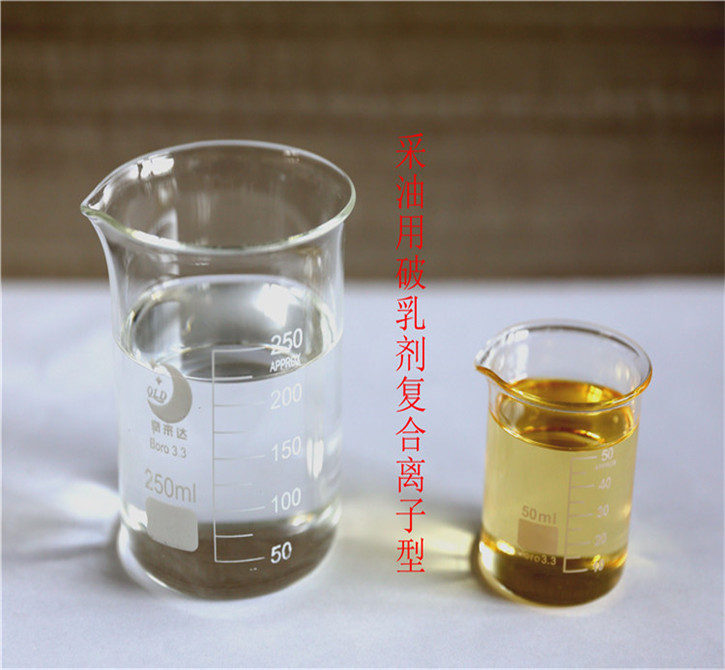Manual of Demulsifier Compound Ion for Oil Recovery

Description of Compound Ionic Demulsifier for Oil Recovery
1. Overview and characteristics.
With the increase of crude oil, heavy oil and complex heavy oil production and frequent oil flooding and well washing operations in oil field development, the crude oil content in sewage increases. After the traditional sewage treatment process settles, organic and inorganic treatment agents are added at one time, and the crude oil obtained contains many suspended impurities, and the low quality and low price are not cost-effective. The agent is a combination of cationic polymer and block resin functional group compound ammonium salt. The average molecular weight is 600 to 4 million, which can be added before the sedimentation tank to promote oil-water separation. The agent is added in the post-treatment process, and the high-quality crude oil is floated, and then the sewage is treated to remove impurities. The effect is good. This agent is especially suitable for conventional crude oil demulsification; tertiary oil recovery demulsification and other anionic active agent flooding block sewage treatment.
2. Technical requirements
Technical index
| Item | Technical index |
| 1) Appearance | Yellow liquid |
| 2) Density (20℃), g/cm3 | 0.90~1.10 |
| 3) Viscosity (20℃), ≤ | 300mPa.s |
| 4) Freezing point, ≤ | -10℃ |
| 5) Relative dehydration rate, ≥ | 95% |
3. Recommended dosage
1; Determine and evaluate according to the physical and chemical indicators of oilfield crude oil;
conventionally recommended concentration; 50ppm-150ppm.
2; Reverse demulsification; Recommended concentration; 50ppm-80ppm
3; Conventional recommended concentration for aging oil; 2.5%~1%
4. Packaging and storage: This product adopts plastic drum or plastic lined iron pass, 200kg; 25kg;, each The net content of the barrel is negotiated according to user requirements, and the net content tolerance conforms to JJF 1070-2005. The packaging barrel should be firm and leak-free. Other packaging methods can also be used according to user requirements. Stored in a ventilated and dry warehouse. Prohibit long-term storage near heat sources.

